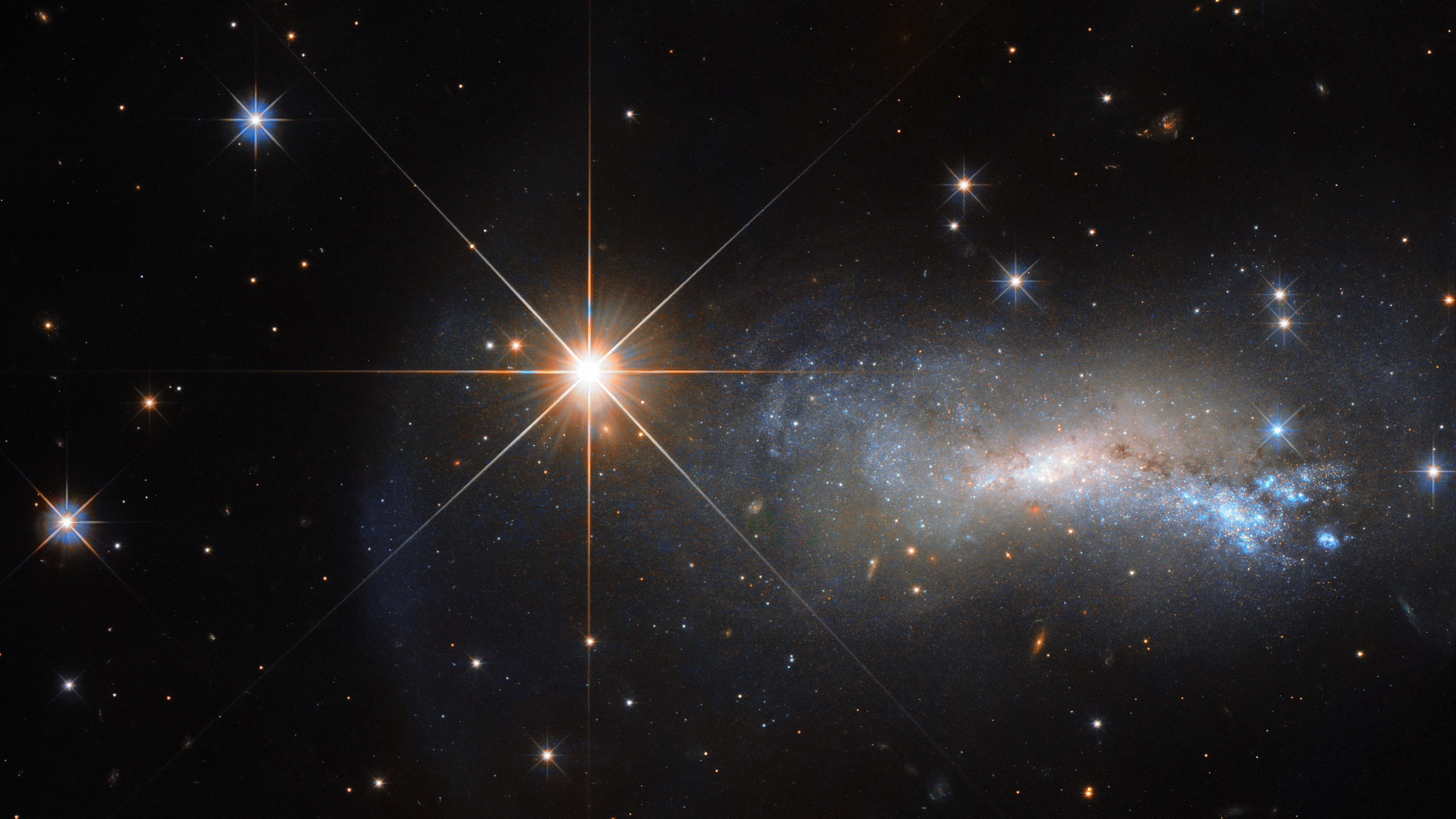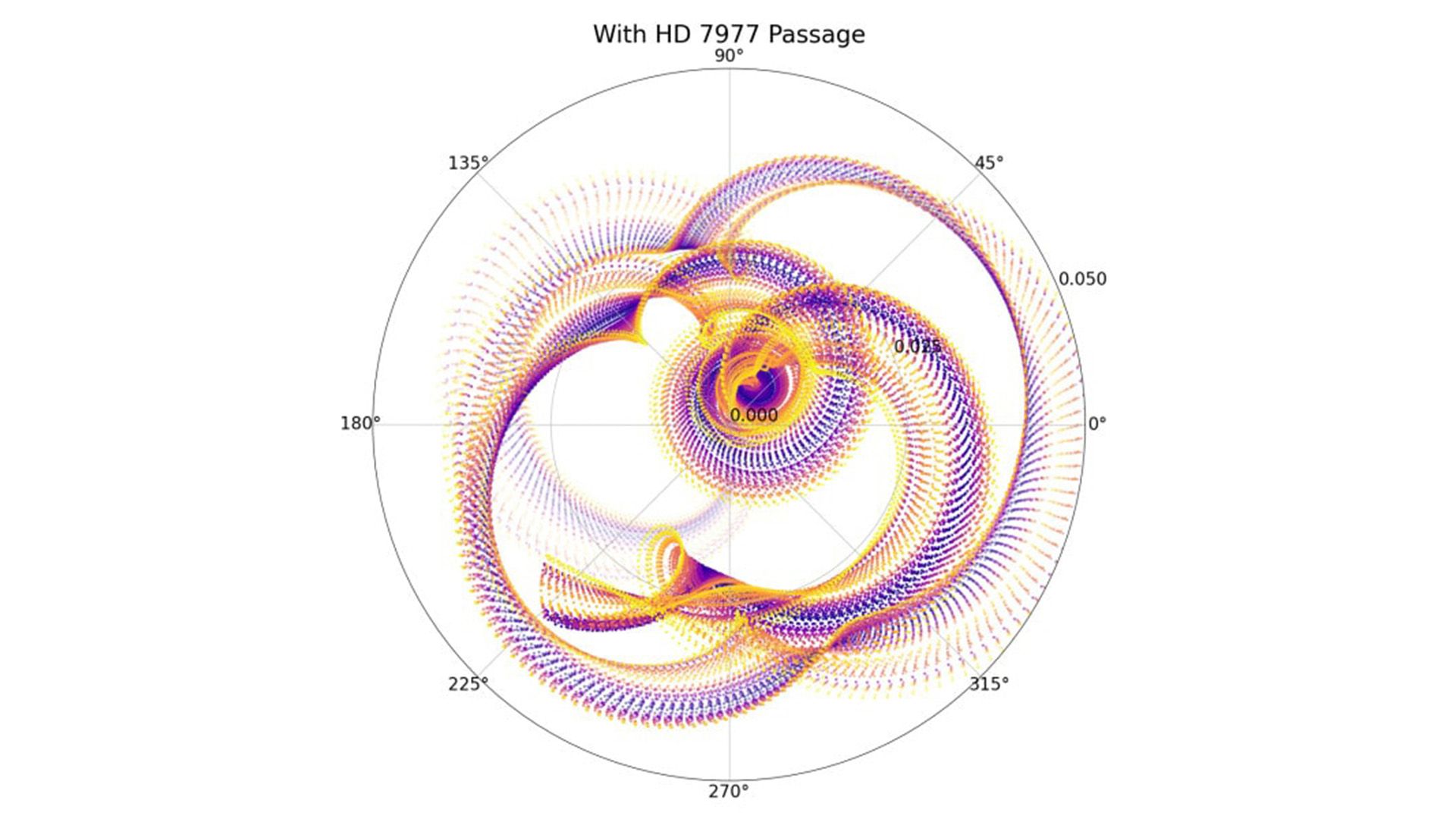
Earth's present-day climate change is human-induced, but the gravitational tugs of other planets can also cause long-term climatic patterns by slightly changing our planet's orbit. Now, research suggests that massive passing stars can alter Earth's path, too — and that these cosmic tugs may limit researchers' ability to study the links between past changes in Earth's orbit and our planet's climate.
Aspects of Earth's path around the sun change over time. For instance, the shape of Earth's orbit shifts between being nearly circular and elliptical every 100,000 years or so, as Jupiter and Saturn pull on Earth. This Milankovitch cycle affects how much solar radiation our planet receives, partially altering our climate and periodically sending us into ice ages.
Simulations that are run backward can help identify such changes in planetary orbits. But like weather forecasts, these measurements become less accurate over longer time spans, because uncertainties in the planets' paths grow exponentially. Therefore, scientists previously believed they could predict Earth's path accurately only over the past 70 million years or so.
Such simulations have another flaw: They consider the solar system a bubble. Yet, being part of the Milky Way, it receives intragalactic visitors fairly regularly. Starsare predicted to pass within 200,000 astronomical units of the sun roughly 20 times every million years or so. (One astronomical unit, or AU, is roughly 93 million miles, or 150 million kilometers, or about the average distance between Earth and the sun.) In fact, in December 2023, researchers calculated that such a star could, a billion years from now, kick Earth from its orbit, possibly saving it from being consumed by the expanding sun.
That study inspired two members of the same team to look into the effects that a passing star may have had on Earth's orbit in the past.
"We just decided to see what would happen if we started flying a bunch of stars past the solar system in simulations," said Nathan Kaib, a senior scientist at the Planetary Science Institute in Arizona. Kaib and co-author Sean Raymond, an astronomer at the University of Bordeaux in France, used computer models to generate a hundred backward forecasts of the paths of planets in the solar system. The research was published Feb. 14 in The Astrophysical Journal Letters.
Get the world’s most fascinating discoveries delivered straight to your inbox.
Each simulation ran until Earth's eccentricity (the amount by which the planet's orbit deviates from a perfect circle) changed from its current value by 10%, after which point the simulations became unreliable. In some scenarios, the researchers allowed a sunlike star to approach within 200,000 AU of the sun. They found that including a stellar flyby slashed the forecasting time span from 77 million years to just 62 million years in the past. The researchers also discovered that the stars create a celestial domino effect, tugging on the gas giants that then nudge Earth.
Kaib and Raymond then moved from the general to the particular, zeroing in on the star that passed the solar system most recently, just 2.8 million years ago: the sun-size HD 7977. Calculations suggest HD 7977 probably approached the sun at a distance of 13,200 AU but may have come as close as 3,900 AU. If the smaller distance was true, the researchers discovered that the forecasting window of Earth's orbit diminished to just 50 million years; beyond then, the orbit became too eccentric to predict.
This shortened forecasting time window has perplexed climatologists who study ancient Earth's climate, because many believed that the Paleocene-Eocene Thermal Maximum, an interval of global warming around 56 million years ago, occurred when Earth's orbit swung our planet extra close to the sun. Now, however, with Earth's path no longer reliable, the climatologists have to investigate other reasons, like geological factors.
The study's findings have implications for the future, too. Kaib said the next slated stellar visitor is Gliese 710, which will pass within 10,000 to 15,000 AU of the sun 1.3 million years from now. But, he added, "whether this perturbation decreases our ability to forecast the Earth's future orbital evolution is an open question."

Abha Jain is a freelance science writer. She did a masters degree in biology, specializing in neuroscience, from the Indian Institute of Science, Bengaluru, India, and is almost through with a bachelor's degree in archaeology from the University of Leicester, UK. She's also a self-taught space enthusiast, and so loves writing about topics in astronomy, archaeology and neuroscience.



